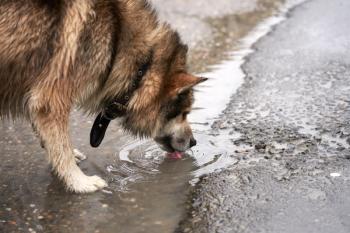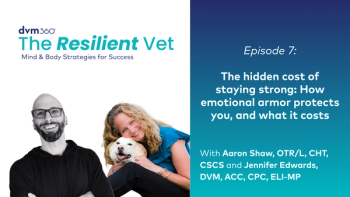
Minorities reject profession, research shows
Manhattan, Kan.-When senior Roz Pineda runs her equine rotations, she's usually the only minority in the room.
Manhattan, Kan.-When senior Roz Pineda runs her equine rotations, she's usually the only minority in the room.
The future DVM of Asian-Hispanic descent joins 12 other minority students attending Kansas State University's (KSU) veterinary college. Roughly 400 students are enrolled. One is black.
Yet while the college's lack of racial diversity fails to reflect the country's number of nonwhites, it's also typical. Populating the nation's 27 veterinary medical institutions are 9,363 students, of which 879 are minorities, the American Association of Veterinary Medical Colleges (AAVMC) reports.
2000 U.S. population split by race, ethnicity
Such small representation stems from cultural differences, not college recruitment, Pineda suggests. Nonwhites steer clear of veterinary education largely due to cultural ideals, which tend to undervalue animal welfare, she says.
"My father is a surgeon, my brother is internist, so the notable profession in my family was being a doctor in human medicine.
"Veterinary medicine was not something I was guided toward. In our household, animals were viewed as dirty," she adds.
Pet attachment reigns with whites
Pineda's upbringing seems to echo KSU Associate Dean Ronnie Elmore's commentary, "The Lack of Racial Diversity in Veterinary Medicine," published in the Jan. 1 Journal of the Veterinary Medical Association.
Applicants to U.S. veterinary colleges by race, ethnicity
Numerous references cited in Elmore's work suggests veterinary medicine has not turned its back on minorities despite AAVMC's report revealing 91 percent of DVMs are Caucasian.
Instead, Elmore theorizes that minorities are indifferent toward the field. To change the profession's make-up, animal ownership must be encouraged, he says.
"As educators, we've been beating ourselves up because we're not attracting minority students," Elmore says. "The real problem is minorities don't own animals at the same ratio as whites. They don't grow up with pets, so they don't value animals in the same fashion."
Dr. Ronnie Elmore
Ethnic attitudes toward pets
While there's little survey information documenting animal ownership by race or ethic group, Elmore's report suggests whites own pets at a much higher rate then most minorities. Data recently published in American Demographics shows whites are 10 percent more likely to own a pet than the average American, whereas blacks are 57 percent, Asians are 28 percent and Hispanics are 20 percent less likely to own a pet.
As a result, students interested in health profession careers and have little animal contact are less likely to choose veterinary medicine, Elmore theorizes. To change the face of the profession, animal ownership by all races must be encouraged, the report adds.
"Many minority students who have never previously interacted with animals have chosen human medicine," Elmore writes. "Given the lack of substantial experience with animals and the more than double expected average annual income in human medicine, this is not surprising."
Economics play role
Dr. Sue-Ellen Brown agrees. A clinical psychologist with the Center for the Study of Human-Animal Interdependent Relationship at University of Tuskegee's (UT) veterinary school, Brown has been studying racial discrepancies for three years.
Dr. Sue-Ellen Brown
But as Elmore cites some of her recently published work in his report, Brown says the author's plan to diversify the profession by promoting animal ownership is idealistic considering the minority poverty levels. According to the U.S. Census Bureau's 2000 report, the 1999 poverty rate for Hispanics was 22.8 percent and 23.6 percent for blacks. By contrast, the poverty rate for non-Hispanic whites ranked 7.7 percent.
"Pets cost money, and to say animal ownership should be promoted when your income is $27,000 a year may be unrealistic," Brown says. "You can't encourage a poor family to take in a pet when it'll be another burden and also might limit their housing options."
"I think just promoting pet care without addressing this bigger sociologic issue is wrong."
Brown is "dead on," says Dr. Michael Blackwell, dean of the University of Tennessee's veterinary college and one of Tuskegee University's early black DVM graduates.
"What it does comes down to is pet ownership, but that's closely tied to economics and other factors," he says. "Changing the demographics of veterinary medicine largely depends whether other sociological factors change."
Missed business potential
In the meantime, Elmore and Brown are calling on the American Veterinary Medical Association (AVMA) and other groups to address the diversity issue. Failure to reach minorities amounts to lost business potential, they say.
"I called the AVMA and asked how many black veterinarians were in the United States, and I got a 'I don't know,'" Elmore says. "If the AVMA doesn't know, then who does? From a marketing standpoint, our profession is really missing the boat if we don't look at this seriously."
The profession's missing a huge marketing opportunity, too, Elmore adds.
"There's a huge population that currently doesn't own animals," he says. "This shouldn't be about the money, but if it will get the attention of our profession, maybe we can change things."
Newsletter
From exam room tips to practice management insights, get trusted veterinary news delivered straight to your inbox—subscribe to dvm360.




